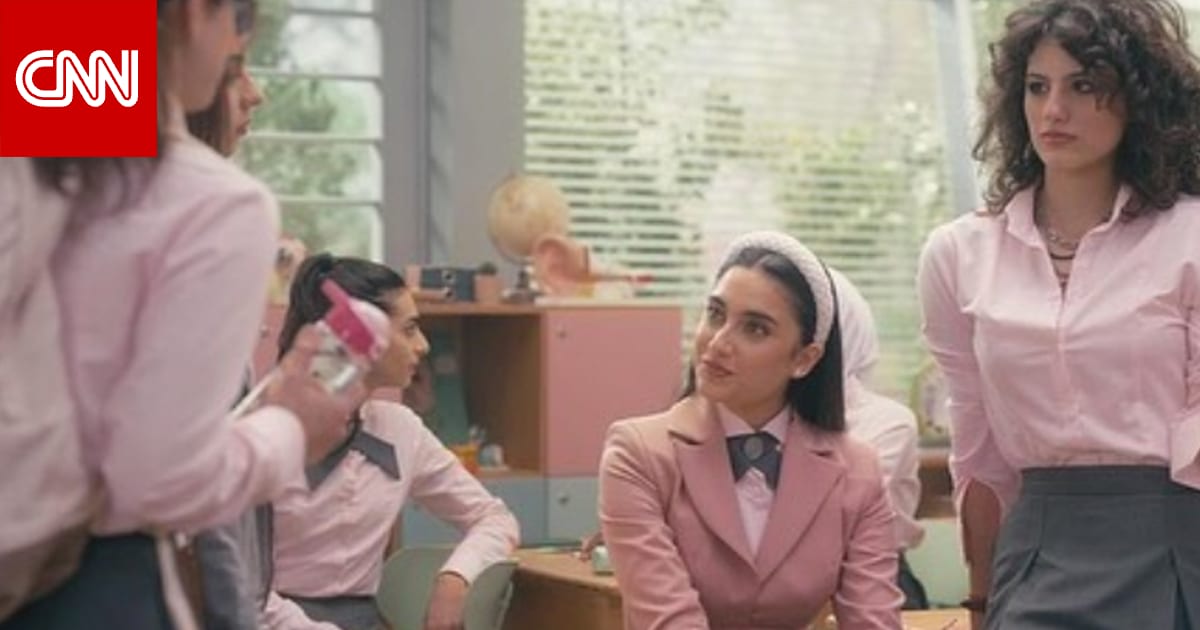This article is written by Samia Ayesh, an independent journalist who writes about Arab cinema, and the opinions expressed below express the opinion of the writer and do not necessarily reflect the views of CNN..
“I wish I could be like her.” Perhaps this sentence resonated in the minds of many of us girls at some point during our lives, such as when a girl wishes to become like a famous singer, actress, or model, or in our time: “influencer.” On social networking sites.
When a girl thinks of this sentence, “I wish I could become like her,” only the bright aspects come to mind, such as fame, beauty, the spotlight, and the attention she receives as a result of all of that. However, it does not occur to her that there is another side to this glamorous life, which may be more difficult than she can bear.
This is precisely what Tima Al Shomali returned with as the subject of the second season of the series “Al Rawabi School for Girls”, which achieved great success in its first part on the Netflix platform.
The second season consists of six episodes, and for me personally, the last three episodes are the heart and essence of the series. The first three episodes were not mature enough in terms of story and plot. Rather, the dialogues in them seemed direct, and sometimes quite intuitive, and many of the scenes in these episodes were sketches copied from social media posts, so I did not feel that this The episodes gave the work the right it deserved in its first part.
Aside from the fact that this season borrows some of its scenes and style from the famous American movie Mean Girls, the equation changed somewhat in the following three episodes, as the story began to cohere, and there was an escalation in events, removing the second part from the cloak of monotony in its first episodes. The work shed light on an important issue, which is blackmailing girls through social networking sites as a result of their lack of awareness of this virtual world, and how they can be more aware of its dangerous aspects and concerned about their digital safety through it.
The second season presented the life line of several girls, some of whom belong to a low-income class in Jordan, and others who try to keep up with this class by imitating them and getting close to them in any way. To present this class struggle, we do not need Sarah to be poor and live in a very modest house. Rather, it is sufficient for her to be, as she appears in the series, belonging to a middle-class family. The father tries as much as possible to cover the expenses of moving to this expensive school, while she pays… The mother asks her daughter from time to time to be more famous on social media, and tries to attract advertisers in the hope of getting them out of their current situation. The viewer here needs to read between the lines, more than following the course of the work literally.
Perhaps while I was watching Al Rawabi Girls School, I noticed a very important idea. It may not be what appears in the series, but it certainly led to everything we saw: the parents. Everything that goes on around the school among the girls is a result of the homes and families they come from. Let us take Sarah for example: she and her brother were not in the embrace of a warm family, but rather every time we watch this family, they are presented collectively and individually at the same time: although the family is sitting in one room, the father is busy with his work or watching television, the mother is focused on Arguing with her father, and pushing her daughter onto the path of false fame without considering the consequences of things, but rather in order to brag to her friends.
Even when Sarah got into trouble, she did not find the warm embrace at home that she found with Miss Abeer, for example. Rather, she faced screaming, negativity, and perhaps insults and beatings.
How can teens feel safe in a home that treats them this way? An important question raised by the series, even if not directly.
Sarah was the first character in the series, but there is another character whose storyline was excellent, and I wish it had been highlighted more, which is Farah. (We will not spoil the events here, we will just give the viewer the opportunity to follow what is happening to this character.)
But what counts most for Tema and her team in this season is the smooth reference to the last season, which appeared in three scenes: in the first episode when Sarah sat at Lian’s table, at the memorial service held by Lian’s friends, and in the scene of Lian’s brother leaving the hall in court. Sarah’s brother enters. These scenes were a way to combine the ideas of the two seasons as if they were one season.
I loved seeing shots of the city of Amman in this season, which appeared more in this season compared to the previous season. This gave us a geographical and human context for the work, making the story more relevant to us.
Tima and her distinguished team presented work with a strong message and a brilliant visual appearance. I do not hope that there will be a third season of Al Rawabi Girls School, but what I do hope is that we will see Tima presenting work in a new and different way, and perhaps less “velvet,” “arranged,” and “visually dazzling,” as she is certainly capable of that.

